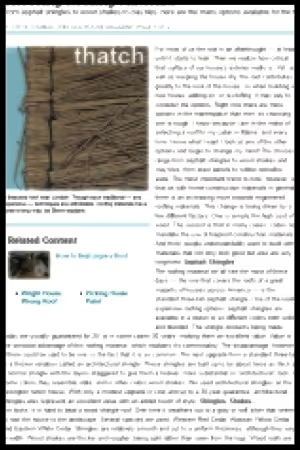
Fifteen seconds. According to Ginny Soskey at HubSpot, that is about how long 55% of your landing page visitors will spend reading what you have to say. Your landing pages may be keyword-rich and filled with useful and compelling information, but none of that will matter if nobody reads it. One thing that can lead to high bounce rates is a page that simply does not look readable. I myself will quickly leave a web page when doing research if what I find is a page filled with nothing but words – and I am someone who enjoys reading.

The problem is that when people use the Internet to get information, they want fast results. They do not want to spend a lot of time digging through a page for the specific information they want. Also, it is far more difficult to read dense text on a computer or mobile device screen than it is on a printed page.
I don’t want to call out any particular pages by name, so I’ll just give you a slightly blurred screen shot of a page I came across just yesterday and left without reading:
And this page was far from the worst I’ve seen while doing online research. To be fair, this article did include occasional bolded words, which leads me to believe that the author intended for it to look different (broken up by headers) when published, but that is not what happened in this case. The result is a page loaded with words – a page that is not likely to be read.
When you break up your text with a series of headers, you do more than just make it easier for your readers to quickly find the information they are looking for; you present them with a page that does not seem overwhelming.
When writing or editing any article, I try to ensure that there are no more than three paragraphs between headers, and that each paragraph is made up of no more than three sentences. Sometimes, of course, it is necessary to include more than three sentences within a single paragraph, but that should be an infrequent occurrence.
Another great thing about headers is that they provide an excellent place to showcase important keywords. So long as your headers are included within h1 header tags, the words used will enjoy higher weighting in search engine results (SERPS). You can learn more about the use of header tags here.
Whenever you are listing three or more things within a sentence, consider using bullet points. Doing so not only makes the sentence easier to read, the added white space around the words makes the article more inviting to readers. Consider the following paragraphs:
Writing great copy isn’t enough. An article that employs the strategic use of headers and bullets will enjoy the benefits of lower bounce rates, more readable text and more effective use of keywords. Be sure to consider how your page looks before publishing it.
Writing great copy isn’t enough. An article that employs the strategic use of headers and bullets will enjoy the benefits of:
Be sure to consider how your page looks before publishing it.
Each says the exact same thing using the exact same words, but the second paragraph is easier to follow, particularly if it is part of an information-dense page, and it highlights some of your key points.
It should come as no surprise that the longer someone stays on your page, the more copy they will read. Neil Patel of QuickSprout.com recently blogged about an experiment he did in which he posted blogs that contained no headers at all and then the exact information with header, bullets, lists and blocked quotes. He found that by improving the page layout, he got readers to stay on his page about 31 seconds longer than when he did not.
The next time you are reviewing copy to be published as part of your site or as a landing page, be sure to consider how that page will appear to your readers. The more accessible the information is, the more likely people will stick around to read what you have to say.